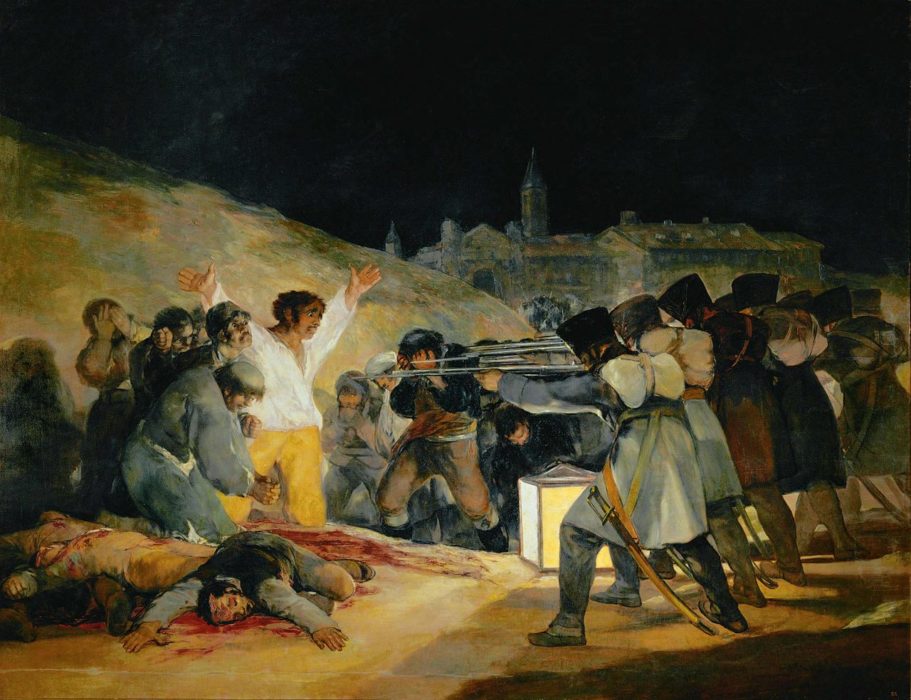Francisco Goya’s “The Third of May 1808” depicts the Napoleonic invasion of Spain where cities were raided, citizens were fired upon, and humanity was absent. In first looking at the painting, one’s attention is directed towards the man in the white and yellow clothing; all color is dull and dark surrounding him. Even as his clothing radiates innocence and hope, the expression of the mans face suggests his fear and anguish. All those around him, besides the shooters, cover there faces, turn away from watching, or hold onto the person next to them as a means of creating what little security is available to them.
While the attack on Spain took place during the day, Goya makes the conscious decision of not only creating an atmosphere of the night sky but leaves it absent of any star or moon light. What is a particularly interesting piece of background is that Hoya lost his hearing in 1792 (22 years before the release of this painting). The painting, while dull, actively lacks the production of sound: there is no gunfire coming from the weapons, indicating that no gunshots could be heard, the night sky is void of any life, indicating a departure from the natural world, and no citizen in the line of sight has their mouth open, indicating that no screams are being made. The structure of this painting is purely based on the usage of sight.
The lantern in the middle creates a diagonal line traced through to the bottom of the painting to separate the two kinds of people in this situation: the oppressors and the oppressed. More light is shown on the left side of the painting in favor of the oppressed. This could perhaps be interpreted as a religious symbol as their “fates” are now sealed as they await their demise. The usage of white, particularly found on the man, is similar to that of an angel seeking to plead for the lives of the innocent. Hoya seeks to not only spread awareness about the atrocity of colonization and war but illustrate how human beings can lose sight of their benevolence.
